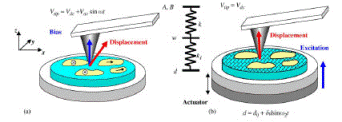Department of Physics and Astronomy: Publications and Other Research

Alexei Gruverman Publications
Document Type
Article
Date of this Version
2011
Citation
McQuaid, R. G. P. et al. Mesoscale flux-closure domain formation in single crystal BaTiO3. Nat. Commun. 2:404 doi: 10.1038/ncomms1413 (2011).
Abstract
Over 60 years ago, Charles Kittel predicted that quadrant domains should spontaneously form in small ferromagnetic platelets. He expected that the direction of magnetization within each quadrant should lie parallel to the platelet surface, minimizing demagnetizing fields, and that magnetic moments should be configured into an overall closed loop, or flux-closure arrangement. Although now a ubiquitous observation in ferromagnets, obvious flux-closure patterns have been somewhat elusive in ferroelectric materials. This is despite the analogous behaviour between these two ferroic subgroups and the recent prediction of dipole closure states by atomistic simulations research. Here we show Piezoresponse Force Microscopy images of mesoscopic dipole closure patterns in free-standing, single-crystal lamellae of BaTiO3. Formation of these patterns is a dynamical process resulting from system relaxation after the BaTiO3 has been poled with a uniform electric field. The flux-closure states are composed of shape conserving 90° stripe domains which minimize disclination stresses.
Includes supplemental materials.
Included in
Atomic, Molecular and Optical Physics Commons, Condensed Matter Physics Commons, Engineering Physics Commons, Other Physics Commons


Comments
Copyright © 2011 Macmillan Publishers Limited.
This work is licensed under a Creative Commons Attribution-NonCommercial- Share Alike 3.0 Unported License.